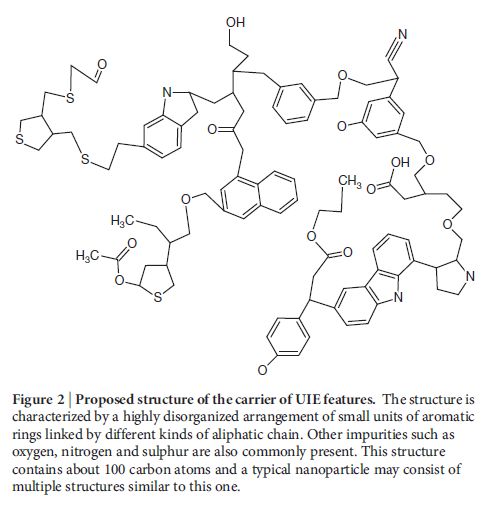Astronomers are reporting that organic compounds of unexpected complexity exist throughout the Universe - which mean they can be made naturally by stars.
Researchers write in Nature that an organic substance commonly found throughout the Universe contains a mixture of aromatic (ring-like) and aliphatic (chain-like) components, compounds so complex that their chemical structures resemble those of coal and petroleum.
Since coal and oil are remnants of ancient life, this type of organic matter was thought to arise only from living organisms but this new discovery suggests that complex organic compounds can be synthesized in space - even when no life forms are present.
The researchers investigated the unsolved phenomenon of Unidentified Infrared Emissions (UIEs), a set of infrared emissions detected in stars, interstellar space, and galaxies in the 3–20
micrometers range. For over two decades, the most commonly accepted theory on the origin of these signatures has been that they are the result of infrared fluorescence from small (~50-
carbon-atom) gas-phase polycyclic aromatic hydrocarbon (PAH) molecules made of carbon and hydrogen atoms.
From observations of nebula NGC 7027, the proto-planetary nebula IRAS 222721+5435 and the Orion bar of the Orion nebula by the Infrared Space Observatory and the Spitzer Space Telescope, they instead showed that the astronomical spectra have features that cannot be explained by PAH molecules. Instead, they propose that the substances generating these infrared emissions have chemical structures that are much more complex. By analyzing spectra of star dust formed in exploding stars called novae, they show that stars are making these complex organic compounds on extremely short time scales of weeks.
Credit: Nature magazine.
Not only are stars producing this complex organic matter, they are also ejecting it into the general interstellar space, the region between stars. The work supports an earlier idea proposed by Prof. Sun Kwok of Hong Kong University that old stars are molecular factories capable of manufacturing organic compounds. "Our work has shown that stars have no problem making complex organic compounds under near-vacuum conditions," says Kwok. "Theoretically, this is impossible, but observationally we can see it happening."
Most interestingly, this organic star dust is similar in structure to complex organic compounds found in meteorites. Since meteorites are remnants of the early Solar System, the findings raise the possibility that stars enriched the early Solar System with organic compounds. The early Earth was subjected to severe bombardments by comets and asteroids, which potentially could have carried organic star dust.
Whether these delivered organic compounds played any role in the development of life on Earth remains an open question.
Citation: Sun Kwok&Yong Zhang, 'Mixed aromatic–aliphatic organic nanoparticles as carriers of unidentified infrared emission features', Nature (2011) doi:10.1038/nature10542






Comments